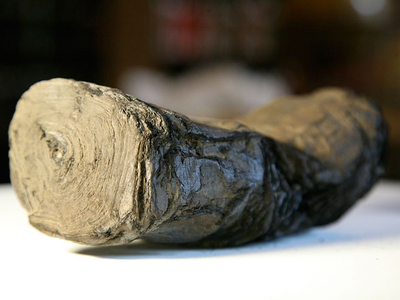Charred ancient texts made legible

Recently, the writing inside a scroll that was charred in the eruption of Mount Vesuvius in AD 79 has been deciphered for the first time by modern researchers. The roll of papyrus was found in an ancient library discovered in Herculaneum 260 years ago, according to the news released by the Munich-Centre for Advanced Photonics.
The text was made legible using X-rays at the European Synchrotron Radiation Facility (ESRF) by a team from the Consiglio Nazionale delle Ricerche, the ESRF, the Ludwig-Maximilian-Universität and the Center National De Recherche Scientifique. The technique of X-ray phase-contrast tomography offers new possibilities for interpreting hundreds of texts that had previously been considered unreadable.
In 1754, a library containing hundreds of carbonized papyrus scrolls was discovered. Since then, many attempts have been made to look inside the texts. However, the scrolls can be easily damaged by attempts to unroll them.
“After several trials to select the most readable samples from the scanned images, the dark curves cannot be confused with the papyrus fibers mesh,” said Daniel Delattre, a researcher from the CNRS-IRHT-Institut de Recherche et d’Histoire des Textes, describing the moment he first saw the letters.
Researchers have reconstituted an almost complete Greek alphabet from the rolled-up papyrus and speculate that the text could be written by the Epicurean philosopher Philodemus.
Some noted: “Image processing is a key aspect in this work. We are still far from being able to read the full text of a carbonized papyrus, but there is still room for improvements in the analysis methods."
